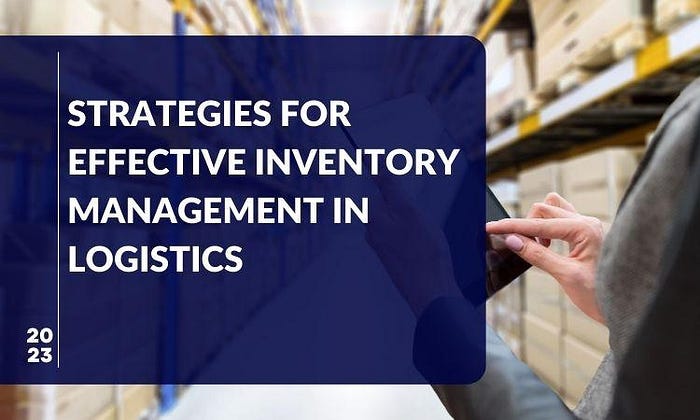Strategies for Effective Inventory Management in Logistics

Strategies for Effective Inventory Management in Logistics
In logistics, where proper stock management is crucial to the success of your supply chain, you have arrived. In this article, we’ll explore the intricacies of inventory management and the ways in which doing so might improve logistical operations. Join us on this exciting adventure whether you’re a seasoned logistics professional or a business owner looking to improve supply chain efficiency by learning strong methods and best practices for inventory management.
Realizing the Importance of Efficient Inventory Management
Inventory Management’s Vital Function
Inventory management is the backbone of efficient operations in the ever-changing logistics industry. Having products on hand when customers need them, lowering carrying costs, and keeping cash flow healthy are all results of well-managed inventory.
Finding a Happy Medium Between Stock and Expenses
It can be tricky to strike a balance between keeping enough stock on hand to meet demand and avoiding wasteful overstocking. Too much stock can be a drain on resources, while not enough might result in shortages and unhappy buyers. How can you find that happy medium?
Methods and Protocols for Efficient Inventory Control
Planning Based on Anticipated Demand
One of the most important aspects of stock management is being able to accurately predict consumer demand. Inventory planning is aided by demand forecasting, which takes into account past sales data, current market conditions, and customer feedback.
Methodological Approach: Examining Past Data, Applying Predictive Analytics, and Working Together with Sales and Marketing Teams to Plan Inventory.
By using demand-driven inventory planning, Company XYZ was able to cut down on surplus stock by 20% and increase turnover.
Classifying Inventory Using an ABC Model
Items in stock are not created equal in terms of value or importance. The ABC analysis technique divides products into three groups, each with its own sales volume and profit margin.
The first step is to classify all inventory goods into three groups: A, B, and C according to their value and frequency of use.
Company ABC was able to better organize their inventory and focus on the most important goods thanks to the use of ABC analysis.
JIT Inventory Management, a C. Just-in-Time System
The goal of the Just-in-Time method is to only replenish stock when it is really used in manufacturing or shipping orders. With JIT, you won’t have to worry as much about wasted money on storage or spoiled items.
Methodical Procedure: Putting Just-In-Time (JIT) concepts into action through strengthening ties to suppliers, enhancing output effectiveness, and capitalizing on real-time stock data.
In order to cut down on storage fees and maximize efficiency, Company XYZ implemented a Just-In-Time inventory system.
Read More:https://vimpexltd.com/strategies-for-effective-inventory-management-in-logistics-2/
Comments
Post a Comment